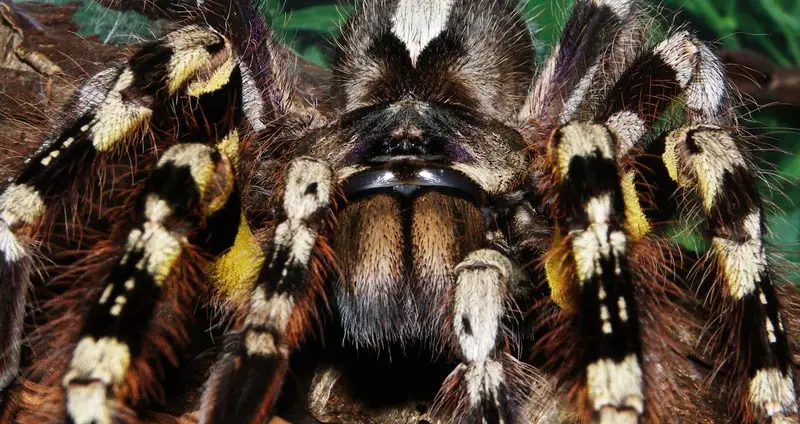With over 850 types of tarantulas, there are species of all shapes, sizes, and personalities. Some tarantulas are great for beginners, while others should be left to the experts.
One way that tarantulas are classified is by the strength of their venom. All tarantulas have venom and use it to immobilize/kill their prey, but they all have varying levels of venom potency.
This post will highlight the 10 tarantulas with the most potent venom. Surprisingly, though, some of the tarantulas on this list pose almost no threat to humans…
Table of Contents
Determining Tarantula Venom Potency
This list wasn’t compiled based off of opinions. Instead, it’s a compilation of data gathered during a 2004 study: “Escoubas, P. & Rash, L. Tarantulas: eight-legged pharmacists and combinatorial chemists. Toxicon 43, 555-574”.
In this study, mice were injected with .1 mL of crude venom of varying tarantulas, and their time to death was recorded. The tarantulas on this list had the fastest times, suggesting higher venom potency.
This controlled measure on mice is more accurate than simply looking at sporadic bite reports of various tarantulas.
The effect that a tarantula bite has on a human can be largely determined by that individual’s allergic reaction to said bite. Therefore, a tarantula’s bite may put kill one person while only causing mild to severe pain in another.
Regardless, some tarantulas are known for their extremely potent venom for humans, and those will be highlighted below.
Top 10 Most Venomous Tarantulas
As stated, the tarantulas below all possess venom that resulted in the quickest killing time in mice.
Some results may be surprising, as a few tarantulas below are considered very safe for humans. On the other hand, other tarantulas that make an appearance aren’t surprising in the least.
So, without further ado, let’s get into the top 10 most venomous tarantulas!
10. Orange Baboon Tarantula
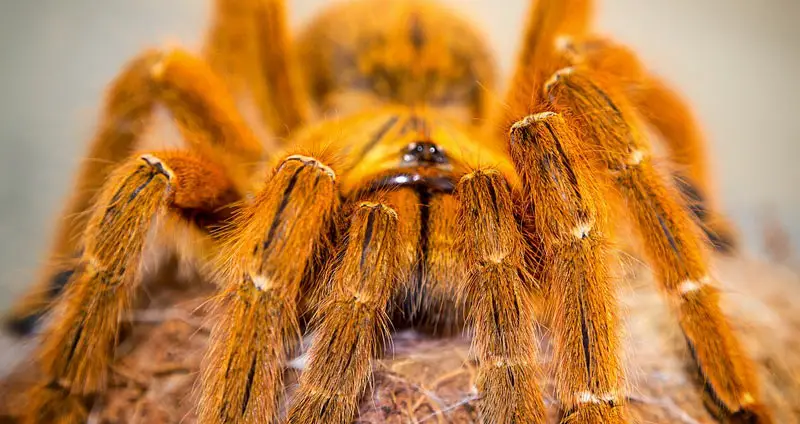
Pterinochilus murinus – To tarantula enthusiasts, it’s no surprise that this tarantula made it onto this list.
The Orange Baboon Tarantula, also known as the Orange Bitey Thing, is a notably aggressive tarantula that’s extremely popular despite the known potency of its venom.
While beautiful, this tarantula is extremely defensive and won’t hesitate to bite anything that it sees as a threat.
Bites on humans tend to have lasting effects that spread throughout the body. Cramping, pulsing, and stabbing pains are very common. Not lethal, but should be avoided.
Time to kill: 6 minutes
9. Chilean Copper Tarantula
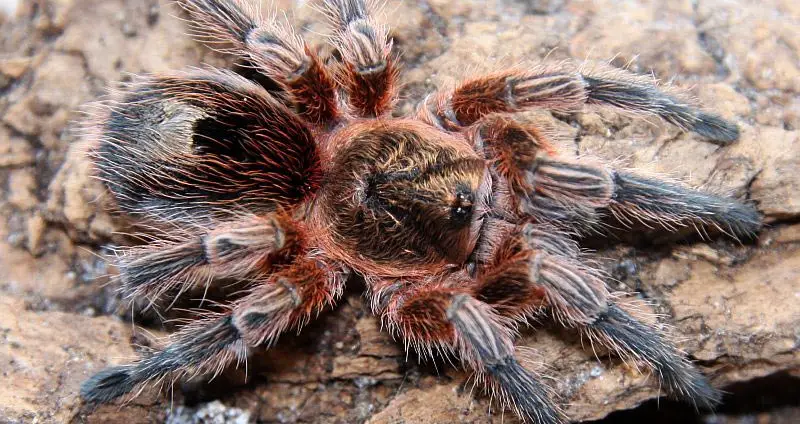
Paraphysa scrofa – Here we have the first of the surprising tarantulas on this list. P. scrofa is a new world tarantula that’s known to be calm, friendly, and a great display species.
Most new world tarantulas are non-threatening to humans and possess venom that only causes mild pain — if they even decide to bite at all!
This can be a good indicator of optimized evolution in these spiders, though. They’ve developed venom that’s perfectly crafted to quickly take down their target prey.
Time to kill: 6 minutes
8. Goliath Birdeater Tarantula
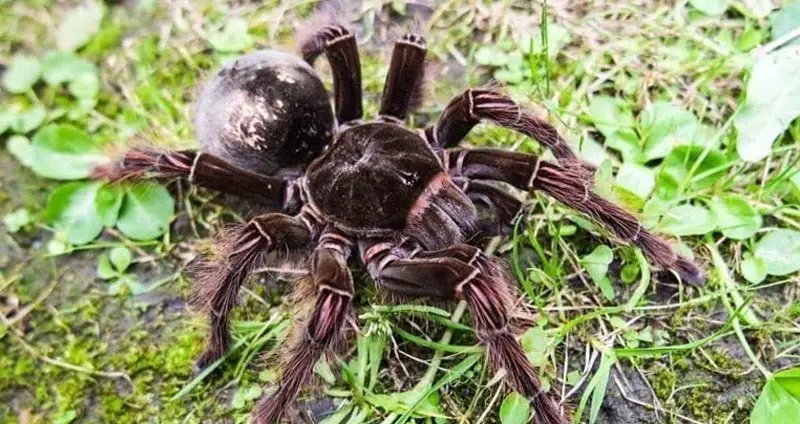
Theraphosa blondi – Frequently touted as one of the largest and heaviest spiders in existence, the Goliath Birdeater Tarantula also possesses some of the most potent venom for mice.
This is another new world tarantula that’s actually considered very safe and easy to care for despite its massive legspan.
The potency of its venom isn’t all that surprising, though, as it needs to be strong enough to take down larger creatures quickly, such as birds.
Time to kill: 5 minutes
7. Togo Starburst Baboon Tarantula

Heteroscodra maculata – Another baboon tarantula, and certainly not the last one that makes it on this list. Baboon tarantulas are known to be beautiful yet aggressive and dangerous.
This beautiful tarantula species is great at camouflaging to match its environment, as you can see above. This is great for ambushing prey and quickly subduing it with its potent venom.
Despite its danger, this spider is slow-moving and quite shy, but it’s still quick to bite.
Time to kill: 5 minutes
6. Chilean Rose Tarantula
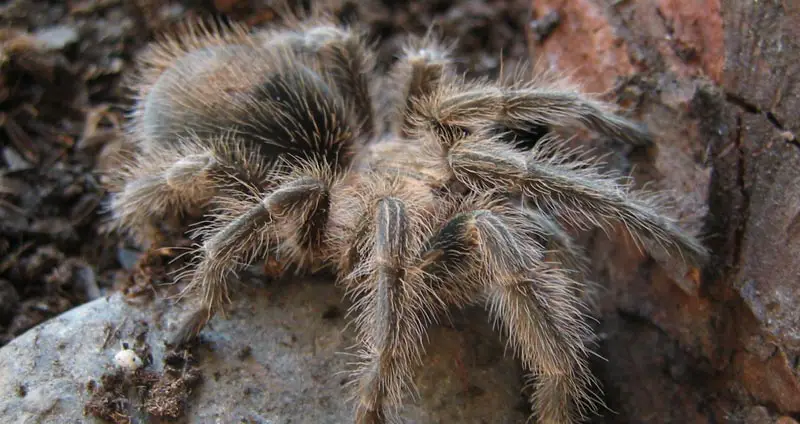
Grammostola rosea – Any tarantula enthusiast will be shocked to find this tarantula on this list — especially at number 6!
The Grammostola genus is known to be quite harmless and friendly, frequently being recommended for people that are looking for their first pet tarantula.
This particular species is slow, shy, and overall friendly. It’s commonly sold in pet stores for very cheap, and its care requirements are basic.
Time to kill: 5 minutes
5. Brazilian Woolly Black Tarantula
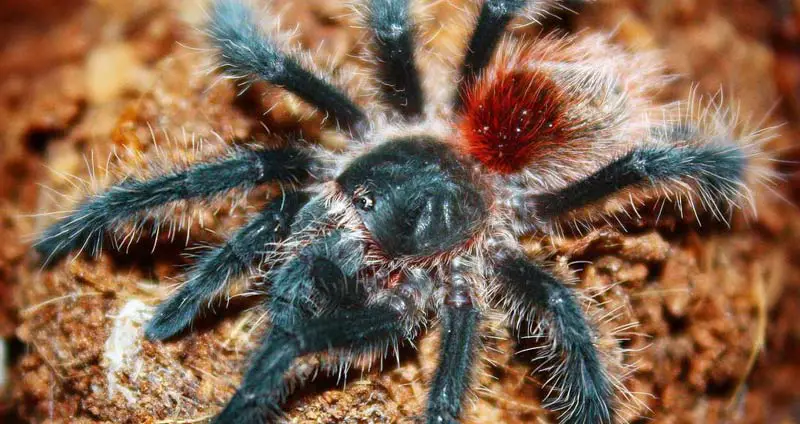
Grammostola actaeon – Another surprising addition to this venom list. G. actaeon is considered a beginner tarantula that’s very docile and friendly and almost never bites humans.
This gorgeous, slightly uncommon species isn’t very keen on being handled, but it’s great for display.
While it can occasionally be a bit spunky, you wouldn’t expect it to possess some of the most potent venom for mice.
Time to kill: 5 minutes
4. Indian Ornamental Tarantula
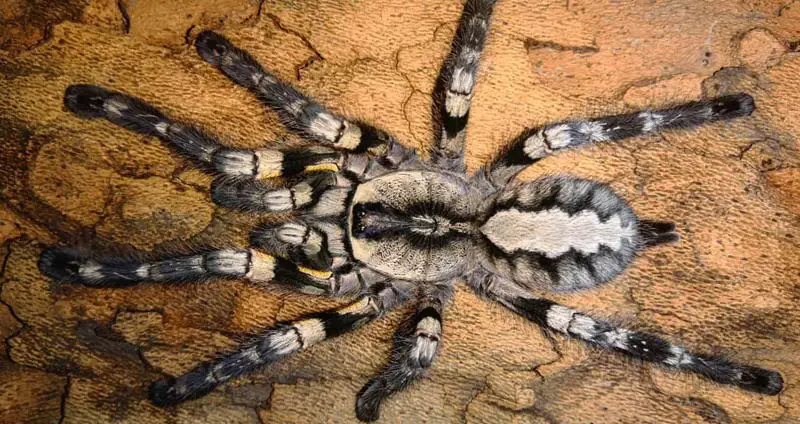
Poecilotheria regalis – Here’s another tarantula that’s not surprising at all to see on this list. Poecilotheria is an Indian genus that’s known for its very painful bite and tendency to defend itself.
Bite victims report persistent cramping to moderate swelling and pain for several days after the bite. Young or old victims may end up hospitalized or dead.
Surprisingly, this isn’t an overly aggressive tarantula. If you don’t pester it, it spends its time hanging out in its enclosure.
Time to kill: 4 minutes
3. Paraphysa sp. Tiger
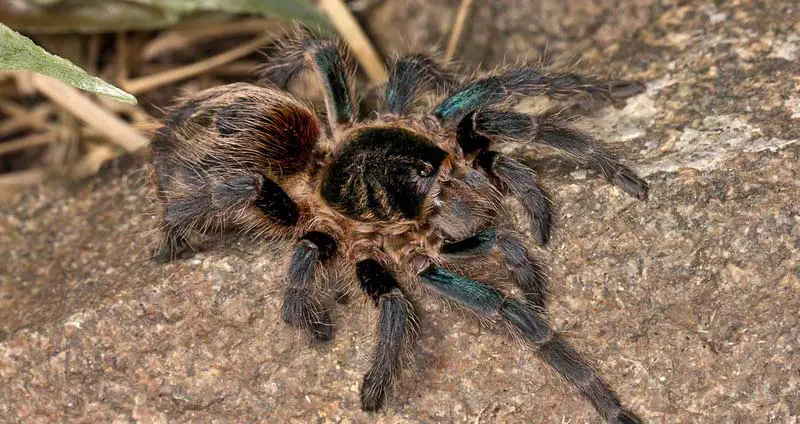
Paraphysa sp. Tiger – The second tarantula of the Paraphysa genus making this list, and it’s also quite a surprise!
This tarantula is very easy to care for and overall great to own. It’s a new world tarantula so quite docile and barely poses a threat to humans outside of its urticating hairs.
However, for some reason, Paraphysa sp. Tiger possesses some of the most effective venom.
Time to kill: 4 minutes
2. King Baboon Tarantula

Pelinobius muticus – Another baboon spider, and easily one of the most notorious tarantulas in terms of danger. Despite its basic appearance, it’s able to pack a very mean punch with its bite.
While not considered aggressive, they are very defensive and will readily defend themselves from a perceived threat. This personality, combined with its great burrowing habits, has made it a very sought-after spider.
Bites are medically significant to humans and can cause days worth of pain and cramping. Handling is never recommended, and ownership should be limited to experts only.
Time to kill: 3 minutes
1. Featherleg Baboon Tarantula
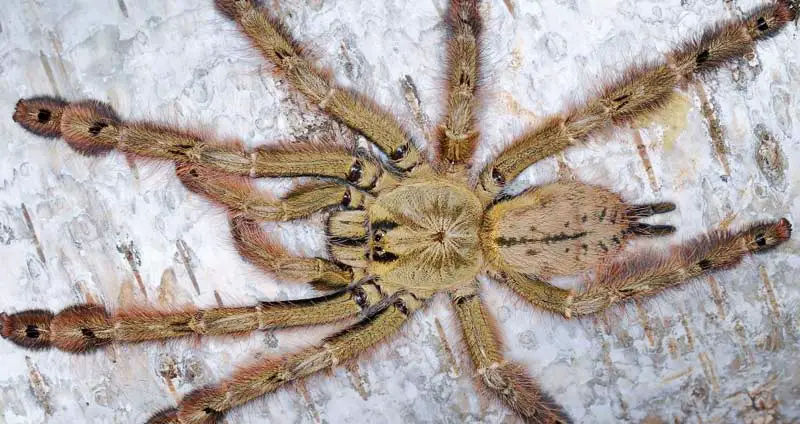
Stromatopelma calceatum – Asking any experienced keepers what tarantula they’d never even consider handling, S. calceatum will frequently be brought up. This tarantula packs one of the biggest punches by far.
Even as a sling, this tarantula is lightning fast and is one of the most defensive and aggressive tarantulas you’ll ever see.
Its sandy color, moderate size, and interesting personality makes it highly desired in the hobby, but it should only be limited to experts that know exactly what they’re doing.
Bites can hospitalize humans and kill the young or weak.
Time to kill: 3 minutes
Conclusion
This list is seriously surprising in some aspects. The presence of baboon tarantulas in it is expected, but there are some new world species that pose virtually no threat to humans — at least in terms of their bite.
This just goes to show that tarantulas are wild animals that can have unpredictable traits and need to be carefully researched before being purchased.
Also, it should be noted that just because a tarantula isn’t on this list, that doesn’t mean that it’s safe. A species may cause a lot more harm to humans as opposed to mice, either through its venom or its urticating hairs.
Tarantulas aren’t the big, scary animals that people make them out to be, but they certainly can be threatening and aren’t a creature to take lightly!

